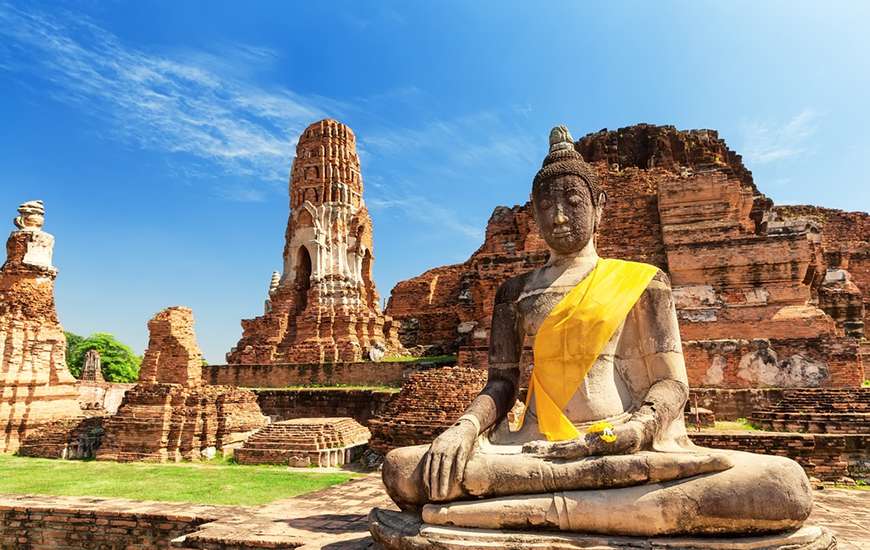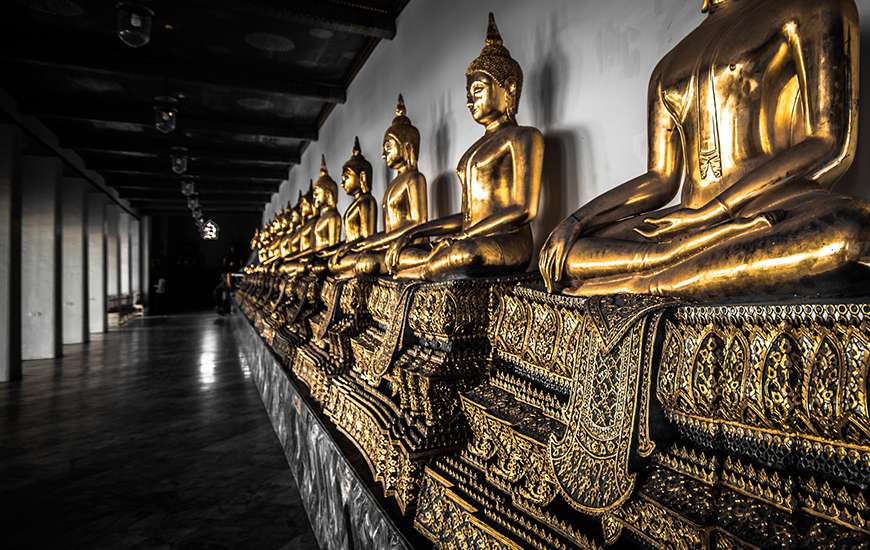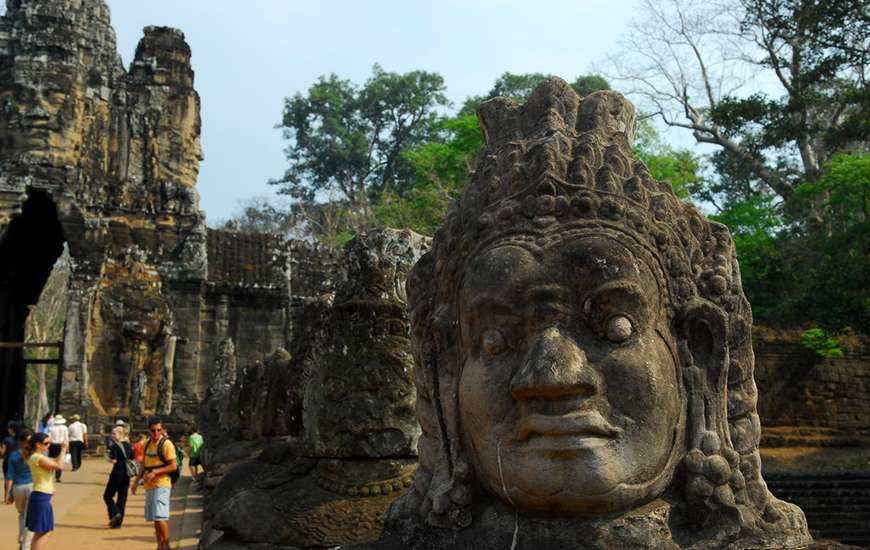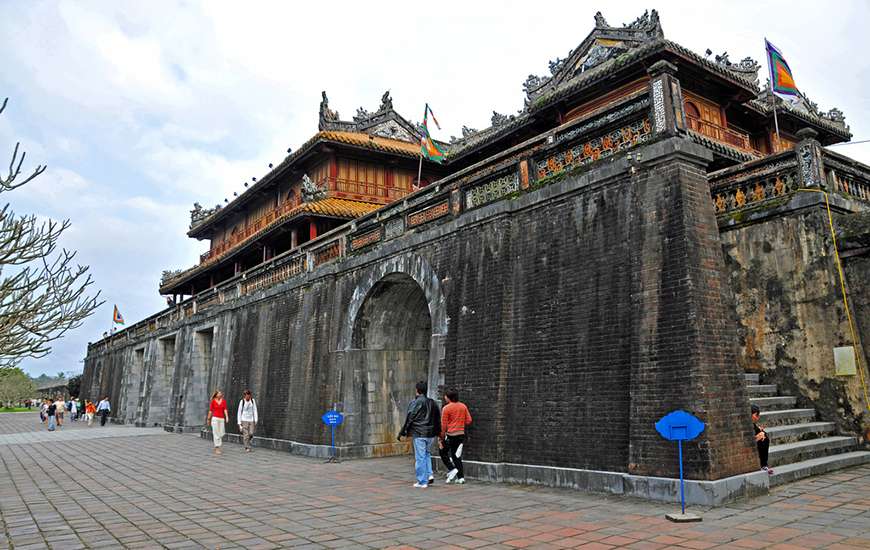As a land rich in history and culture, it should come as no surprise that Southeast Asia has a myriad of temples, ruins and historical sites to discover and explore.
In Thailand, the grand complexes of Ayutthaya and Sukhothai stand as potent reminders of golden ages long past, when the cities ruled much of what is now Thailand, before being eclipsed by the modern capital of Bangkok. Ayutthaya, once the largest city in the entire world, was and is situated on an island surrounded by not one, not two, but three rivers, and it is said that the 12 kilometre wall once featured over a hundred gates.

Ayyuthaya represents the best of Thailand’s historical ruins.
While Sukhothai’s smaller number of temples are older than in Ayutthaya, the former having enjoyed its glory days about a century prior to the latter, they are actually in better condition, probably owing to the less traumatic downfall of Sukhothai compared to the Burmese invasion and razing of Ayutthaya. Sukhothai is often credited as the “first Thai Kingdom”, having laid down much of the groundwork and traditions that would later form an integral part of how the modern country would operate. Today travellers can revel in the rich history of the site as they walk among nearly millennia old ruins.
Only rising to prominence in the 18th century, Bangkok doesn’t have any ancient or mysterious ruins to wander around, but as the nation’s modern capital, many of the most impressive temples in the country can be found here. The famous Reclining Buddha makes its home at Wat Pho, and the Royal Palace complex contains several temples, including one housing the Emerald Buddha, a key part of Thai coronation ceremonies.

Golden Buddha statues are a common sight in Southeast Asian temples.
Without a doubt the most famous temple complex in Southeast Asia, and rivalled by few worldwide, is Angkor Wat. While the complex’s namesake is by far the most impressive, there are dozens of grand structures here surrounded by lush forest, rich wildlife and enormous man-made lakes. With the glory days of the ancient Khmer Empire long since past, the temples are now in an eternal struggle with nature as it seeks to reclaim what was once hers. This makes for some stunning intermingling of ancient culture and nature, as trees drive their roots into the ancient rocks and all kinds of animals make their home among the ruins.
Up in Laos, the Khmer Empire constructed what many see as the smaller brother of Angkor Wat, namely Champasak. While this second Khmer temple complex may not be as grand as its big brother, it’s surrounded by a much more breath-taking natural landscape, contributing to a deep feeling of serenity in all those who visit. The site is surprisingly, and wonderfully, free of tourists, which also contributes to its spiritual vibes.

The giant heads of Angkor Thom.
While Vietnam has relatively few ancient temples compared to its neighbours, it does not lack in rich historical sites. First among these is Hoi An, a medieval Vietnamese trading post that’s been wonderfully preserved. Featuring over a thousand original wooden structures, as well as specific sights like the Japanese Covered Bridge, walking around the town is decidedly peaceful compared to the often hectic nature of other towns and cities in the region, and it’s easy to imagine yourself having been transported back in time to the 16th century. This is especially true in the evening and night time, when much of the town is shut down for traffic, leveraging its traditional atmosphere.

The Imperial Citadel of Hue, one of Vietnam’s largest and most impressive historical landmarks.
The other historical stand-out in Vietnam is the Imperial City of Hue. Once the seat of the mighty Nguyen Dynasty, the palace was sadly heavily damaged during the Indochina Wars. However, several restoration projects have been undertaken, some still on-going, that are gradually restoring the ancient complex to its former glory.
In conclusion, Southeast Asia is a perfect destination for travellers interested in history, or for those who simply enjoy walking among ancient ruins and temples, and endlessly long itineraries exploring ruins and gazing at temples can be crafted for any kind of travel group.